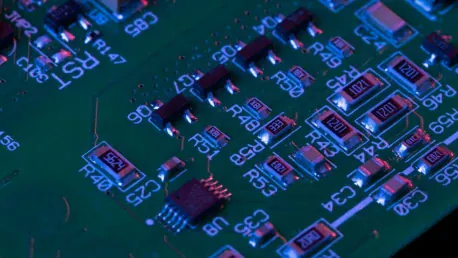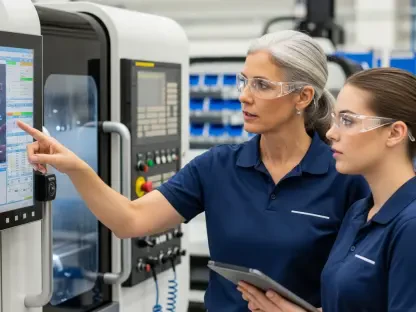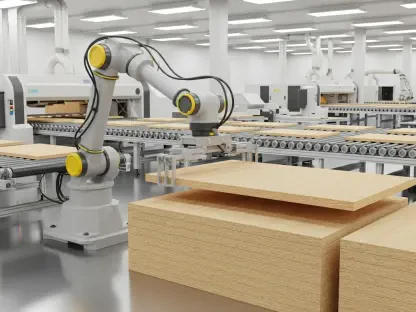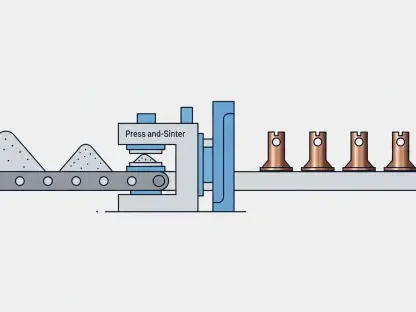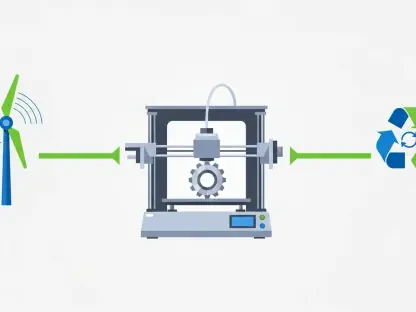The semiconductor industry is on the brink of a transformative era, driven by the integration of artificial intelligence (AI). This convergence promises to revolutionize chip design, manufacturing processes, testing methodologies, material discovery, device innovation, and supply chain management. As AI continues to evolve, its impact on the semiconductor sector will unlock new opportunities and reshape the technological landscape.
AI-Driven Chip Design
Streamlining the Design Process
Traditionally, chip design has been a manual and iterative process, often taking years to complete. AI is set to change this by streamlining the design process, making it faster and more efficient. Machine learning (ML) algorithms can analyze extensive datasets of previous chip designs to propose optimal layouts, predict performance outcomes, and suggest improvements. This approach not only accelerates the design phase but also enhances the overall quality of the chips, ensuring that manufacturers can meet the stringent demands of today’s technology.
The ability to analyze existing designs enables AI to propose innovative solutions, balancing performance and cost-effectiveness. By leveraging historical data, these ML algorithms contribute significantly to refining design strategies, reducing human error, and fostering creativity. The automation and intelligent analysis afforded by AI allow designers to address increasingly sophisticated requirements as semiconductor nodes shrink in size. This trend is crucial as the industry marches toward more intricate and efficient semiconductor technologies, driven by the constant demand for higher performance and lower power consumption.
Managing Complexity and Precision
One of AI’s significant advantages in chip design is its ability to manage the increasing complexity of smaller semiconductor nodes. As chips become more intricate, predicting their behavior under various conditions becomes challenging. AI can handle these complexities with high precision, reducing the risk of failure and ensuring that the chips perform as expected. This capability is crucial as the industry moves toward more advanced and compact semiconductor technologies, where microscopic discrepancies can lead to substantial performance issues.
AI-driven design tools can simulate numerous scenarios and stress conditions that chips might undergo, providing insights that manual methods would struggle to deliver accurately. This level of detailed analysis ensures that designs are robust and reliable, minimizing costly revisions and post-production fixes. By facilitating a deeper understanding of how chips behave under diverse operational circumstances, AI empowers designers to create more resilient products. This robustness is indispensable in sectors where reliability is paramount, such as in aerospace, automotive, and critical infrastructure technologies.
Advanced Manufacturing and Quality Control
Enhancing Efficiency and Accuracy
Semiconductor manufacturing is a complex process that requires extreme precision at every stage. AI enhances efficiency and accuracy by analyzing data in real-time. AI-powered systems can monitor all stages of semiconductor manufacturing, from silicon wafer deposition to the final packaging, detecting defects or deviations from optimal conditions. This real-time analysis helps maintain high standards of quality, significantly reducing the likelihood of errors that can lead to costly reworks or failures in the field.
The incorporation of AI into manufacturing processes allows for the automation of quality control checks, ensuring consistent and precise outcomes across production batches. Advanced machine learning algorithms detect anomalies and provide actionable insights, enabling swift corrective actions. This application of AI not only streamlines production workflows but also enhances the yield and consistency of semiconductor products. By continuously learning and adapting to new data inputs, AI systems evolve to recognize and mitigate emerging issues, fostering an environment of continuous improvement and operational excellence.
Predictive Maintenance and Yield Improvement
Machine learning plays a pivotal role in improving yield rates and reducing waste in semiconductor manufacturing. By analyzing sensor data, AI can predict and prevent defects, ensuring that the manufacturing process runs smoothly. Additionally, AI enhances predictive maintenance, minimizing costly downtimes and reducing production costs and time. This proactive approach to equipment management ensures that manufacturing equipment remains in optimal condition, which is critical for maintaining production efficiency.
Predictive maintenance, powered by AI, anticipates potential machinery failures before they occur, scheduling timely interventions that prevent unscheduled breakdowns. This leads to a reduction in downtime and extends the lifespan of expensive manufacturing equipment. The ability to forecast maintenance needs based on real-time data and usage patterns is invaluable for maintaining a high throughput in semiconductor fabrication plants. Consequently, manufacturers can achieve higher productivity levels and better margins, ultimately contributing to lower costs for end consumers and increased competitiveness in the global market.
AI in Semiconductor Testing
Automating Testing Processes
After manufacturing, chips must undergo rigorous testing to meet standards for functionality, performance, and reliability. AI enhances testing capabilities by automating these processes and detecting anomalies. AI-driven systems can analyze and process test data faster and more accurately than traditional methods, identifying faulty components or design flaws with greater precision. This automation not only increases the speed of testing but also ensures a higher degree of consistency and accuracy, essential for maintaining product quality in high-volume production.
By leveraging AI in testing, manufacturers can achieve comprehensive coverage of potential failure modes without significantly increasing testing time or costs. The ability to rapidly sift through vast amounts of test data allows for quicker identification and rectification of defects. This ensures that only the highest quality chips reach the market, enhancing the reliability and reputation of semiconductor products. Automated testing also frees up valuable human resources, allowing engineers to focus on more strategic tasks such as design optimization and innovation.
Optimizing Test Coverage
AI optimizes test coverage, ensuring thorough testing of all potential failure modes without increasing time or costs. This comprehensive approach guarantees that chips meet the highest standards of quality and reliability, reducing the likelihood of failures in the field. As a result, manufacturers can deliver more reliable products to the market, enhancing their reputation and customer satisfaction.
The advanced capabilities of AI allow for dynamic adaptation of test parameters based on real-time analysis, ensuring that tests are both exhaustive and efficient. This adaptability is especially important in an industry characterized by rapid innovation and stringent quality requirements. By employing AI-driven testing protocols, companies can ensure that their products not only meet but exceed industry standards. This fosters trust with end users and opens up new opportunities for market expansion, particularly in sectors with critical performance requirements like medical devices and automated transportation systems.
AI-Optimized Semiconductor Materials
Discovering New Materials
AI contributes significantly to discovering new materials that could outperform traditional silicon in semiconductors. By predicting behavior at the atomic or molecular level, AI allows researchers to identify promising new materials without extensive experimental testing. This predictive capability accelerates the development of materials that offer advancements in speed, energy efficiency, or heat dissipation. As a result, the semiconductor industry can achieve significant performance improvements and energy savings.
AI’s ability to model and simulate the properties of potential materials provides researchers with a powerful tool for innovation. This approach minimizes the reliance on trial-and-error methods, reducing the time and resources needed for material discovery. By streamlining this process, AI enables faster transitions from conceptual studies to practical applications. This facilitates the introduction of novel materials into the production pipeline, driving technological advancements that cater to the ever-increasing demands for higher performance and energy efficiency in modern electronic devices.
Advancing Material Performance
The predictive capabilities of AI enable faster and more precise identification of new, superior materials. These materials have the potential to revolutionize the semiconductor industry by offering better performance characteristics than silicon. As researchers continue to explore new materials, AI plays a crucial role in pushing the boundaries of what is possible in semiconductor technology. By identifying materials with exceptional conductive, thermal, or mechanical properties, AI supports the development of next-generation semiconductors.
AI’s role in evaluating and optimizing these materials ensures that they can be integrated seamlessly into existing manufacturing processes. This integration is essential for achieving cost-effective mass production of advanced semiconductor components. By reducing the uncertainties and risks associated with introducing new materials, AI helps accelerate innovation cycles and brings state-of-the-art technologies to market more swiftly. The combination of better performance and efficient production processes positions companies at the forefront of technological leadership.
Edge AI and Future Devices
Demand for Specialized Semiconductors
The demand for AI-enabled devices is driving the need for specialized semiconductors tailored for specific applications. Edge AI involves deploying AI algorithms directly on devices rather than relying solely on cloud computing. This shift requires the development of AI-optimized chips that can perform complex tasks while conserving power, making them ideal for sectors like automotive, healthcare, and consumer electronics. These dedicated chips offer real-time data processing capabilities and enhanced security, critical for handling sensitive information locally.
The push for edge AI reflects a broader trend towards decentralizing computing power, enhancing responsiveness, and reducing latency in data processing. As devices become smarter and more autonomous, the need for semiconductors designed to handle specific AI workloads grows. The development of such specialized chips ensures that devices can perform robustly in diverse environments, from self-driving cars navigating complex road conditions to medical devices providing real-time patient monitoring. As the demand for edge computing accelerates, the semiconductor industry must continue to innovate and deliver chips that balance power and performance optimally.
Energy-Efficient AI Chips
As the demand for edge devices grows, the semiconductor industry must develop more specialized, energy-efficient AI chips for real-time data processing. These chips need to handle sophisticated AI tasks in power-constrained environments, ensuring that devices operate efficiently without compromising performance. The development of such chips will be critical in meeting the growing needs of various industries, enabling advancements in smart home technology, wearable devices, and industrial automation.
Energy efficiency is paramount in edge AI applications, where constraints like battery life and thermal management are critical considerations. AI’s role in designing and optimizing these chips ensures that they deliver maximum performance with minimal energy consumption. This balance is crucial for the widespread adoption of AI-enabled devices, as it allows for longer operation times and better user experiences. As technology progresses, the fusion of AI and semiconductor development will be key in driving the next wave of innovation across multiple sectors.
Impact on Semiconductor Supply Chains
Optimizing Supply Chain Management
AI is also making strides in optimizing the global semiconductor supply chain, enhancing demand forecasting, inventory management, and logistics. AI ensures that semiconductor production aligns with market needs by analyzing historical data, identifying patterns, and recommending manufacturing schedule adjustments. This level of optimization helps improve overall supply chain efficiency, minimizing bottlenecks and ensuring timely delivery of critical components.
Implementing AI in supply chain management transforms the traditional reactive approach into a proactive one. By using predictive analytics, companies can anticipate changes in demand and adjust production schedules accordingly. This agility is crucial in an industry where rapid shifts in technology and consumer preferences can impact supply and demand dynamics significantly. Moreover, AI-driven logistics strategies ensure that raw materials and finished products move seamlessly through the supply chain, reducing lead times and operational costs.
Addressing Raw Material Sourcing Challenges
The semiconductor industry stands at the threshold of a revolutionary era, marked by the profound integration of artificial intelligence (AI). This amalgamation is set to fundamentally transform the entire landscape, encompassing areas such as chip design, innovative manufacturing processes, advanced testing methodologies, novel material discovery, and groundbreaking device innovation. Furthermore, AI’s influence will extend to optimizing supply chain management, vastly improving efficiency and responsiveness.
As AI technology continues to advance at a rapid pace, its impact on the semiconductor sector will be nothing short of transformative. The integration promises to unlock unprecedented opportunities, fostering an environment ripe for innovation and substantial technological progress. This evolution will ultimately reshape the industry, ushering in a new phase where AI serves as a pivotal driver of change. Consequently, the combination of AI and semiconductors hints at a future filled with extraordinary advancements, redefining what is possible and setting the stage for groundbreaking developments in various technological realms.
